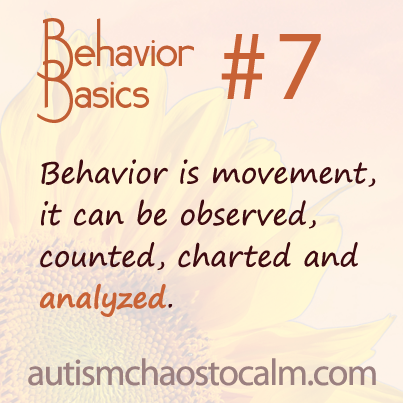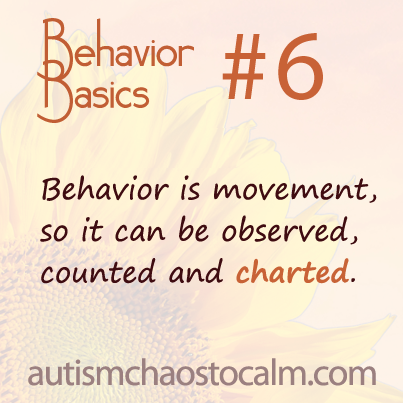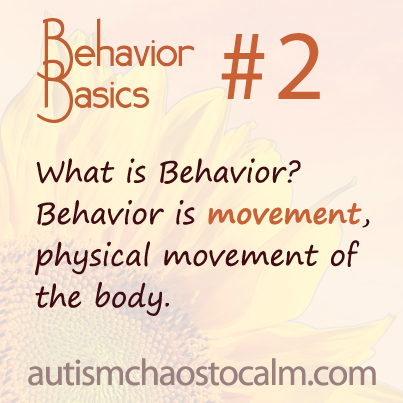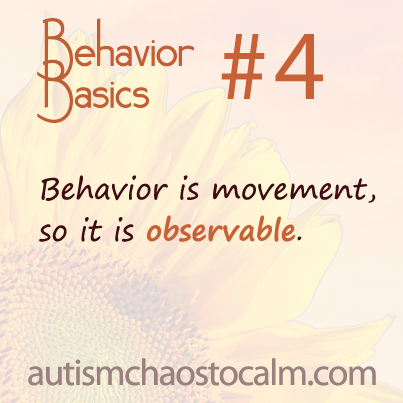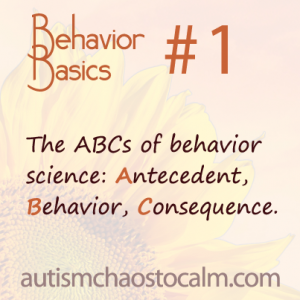 9. The antecedent is the cue or stimulus that comes before the behavior occurs.
9. The antecedent is the cue or stimulus that comes before the behavior occurs.
The antecedent is an event that precedes another event. The antecedent includes the setting, events and persons or things in an environment that preceded the behavior of the learner. The antecedent could be the sound of the smoke detector in the home, the growling of a dog on the street, or the arrival of a group of students in a classroom. Antecedent events can also be things like requests to do perform a task or directions to follow.
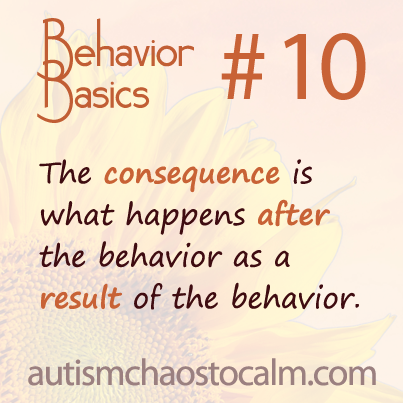 10. The consequence is what happens after the behavior as a result of the behavior.
10. The consequence is what happens after the behavior as a result of the behavior.
After a learner performs a behavior (makes a physical movement), there is a consequence that follows immediately. Karen Pryor explains, “Consequences frequently . . . affect future behavior, making the behavior more or less likely to occur.” A behavior followed by a pleasant consequence is more likely to occur again. The common behavior of opening the refrigerator door will occur more often when the refrigerator is well-stocked and offers pleasant food options. Opening the refrigerator door will occur less often if the refrigerator is empty and dirty.
REMINDER: This concludes the wrap-up of Behavior Basics for the week. Please remember the schedule: On the release date of each module, the Behavior Basics for that module will be compiled into a PDF ebook available from our blog and Facebook page. Click on this link to download the entire series of 42 Behavior Basics for free: http://statictab.com/m7bizwt.
